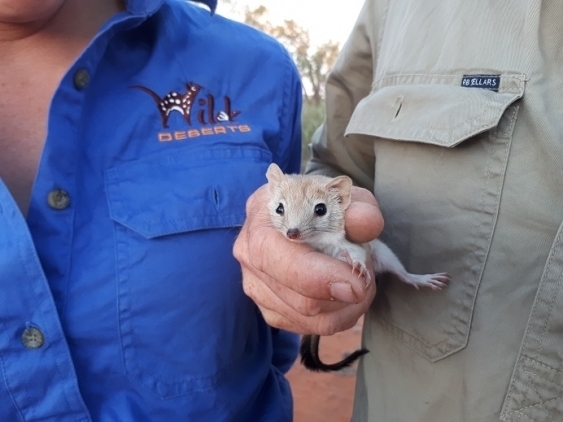Tiny yet deadly marsupial thought to be extinct for over 100 years has just been found alive
The tiny carnivorous creature only weighs 150 grams and around 12 inches long from nose to tail.
An adorably tiny-yet-deadly marsupial that was believed to have been extinct for over 100 years was just rediscovered alive in Australia. The unexpected discovery of the crest-tailed mulgara indicates that the species may have actually expanded steadily over the past few years.
The tiny carnivorous creature only weighs 150 grams and around 12 inches long from nose to tail. It was believed to be locally extinct for over a century, until it was unexpectedly found alive in the Australian state of New South Wales. Previously, fossilised bone fragments of the creature found in the area were the only evidence that indicated that the species once inhabited the New South Wales region.
"The Crest-tailed Mulgara was once widely distributed across sandy desert environments in inland Australia, but declined due to the effects of rabbits, cats and foxes," UNSW scientist and Wild Deserts ecologist Dr Rebecca West said in a statement. "The species weighs around 150 grams and has pale blonde fur and a thick tail with a distinctive black crest."
For a long time, it was thought there was only one species of the creature. However, in 2005, genetic testing confirmed that there were in fact, two distinct species – the crest-tailed mulgara and its cousin the brush-tailed mulgara, ScienceAlert reported. Both species are reportedly the same size and have the same sandy-blonde fur.
Although the crest-tailed mulgara is known to inhabit the desert region of Central Australia, it is still reportedly listed as vulnerable in the Northern Territory and Queensland, endangered in South Australia, and extinct in New South Wales. However, this status will now have to be revised given the recent unexpected rediscovery of the creature.
ScienceAlert reported that like many other desert-dwelling creatures in Australia, mulgaras are also nocturnal creatures that come out to hunt prey at night and live in extensive networks of underground burrows. The creatures reportedly don't need water at all to survive, instead they depend on juices found in the animal meat they consume to quench their thirst. Mulgaras reportedly hunt small invertebrates such as spiders and centipedes as well as small reptiles and mammals.
The unexpected rediscovery of the crest-tailed mulgara could also indicate that other previously locally extinct species could also thrive in the area. The rabbit overpopulation issue in Australia appears to have culled the numbers of many local species.
However, UNSW Sydney's Wild Deserts project aims to deal with the issue by reintroducing previously extinct species are reintroduced to the area. "Next year we are due to begin introduced predator and rabbit eradication from a large area, which will no doubt help the Mulgara," said UNSW scientist and Wild Deserts project co-ordinator Reece Pedler.
"The aim of this project is to return mammal species not seen in their natural habitat for over 90 years in Sturt National Park," National Parks and Wildlife Service area manager Jaymie Norris said. "Rabbits, cats and foxes will be eradicated from two 20-square-kilometre fenced exclosures in Sturt National Park, before locally extinct mammals are reintroduced.
"Reintroduced native mammal species will include Greater Bilby, Burrowing Bettong, Western Quoll and Western Barred Bandicoot."

























